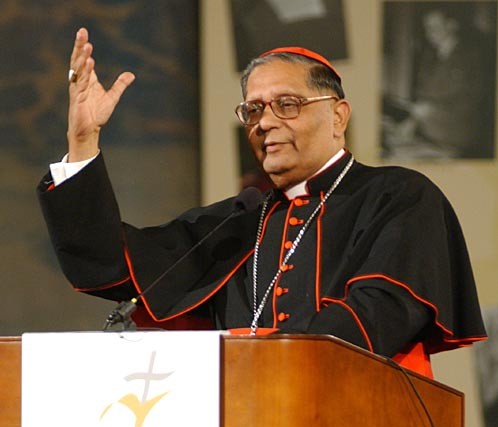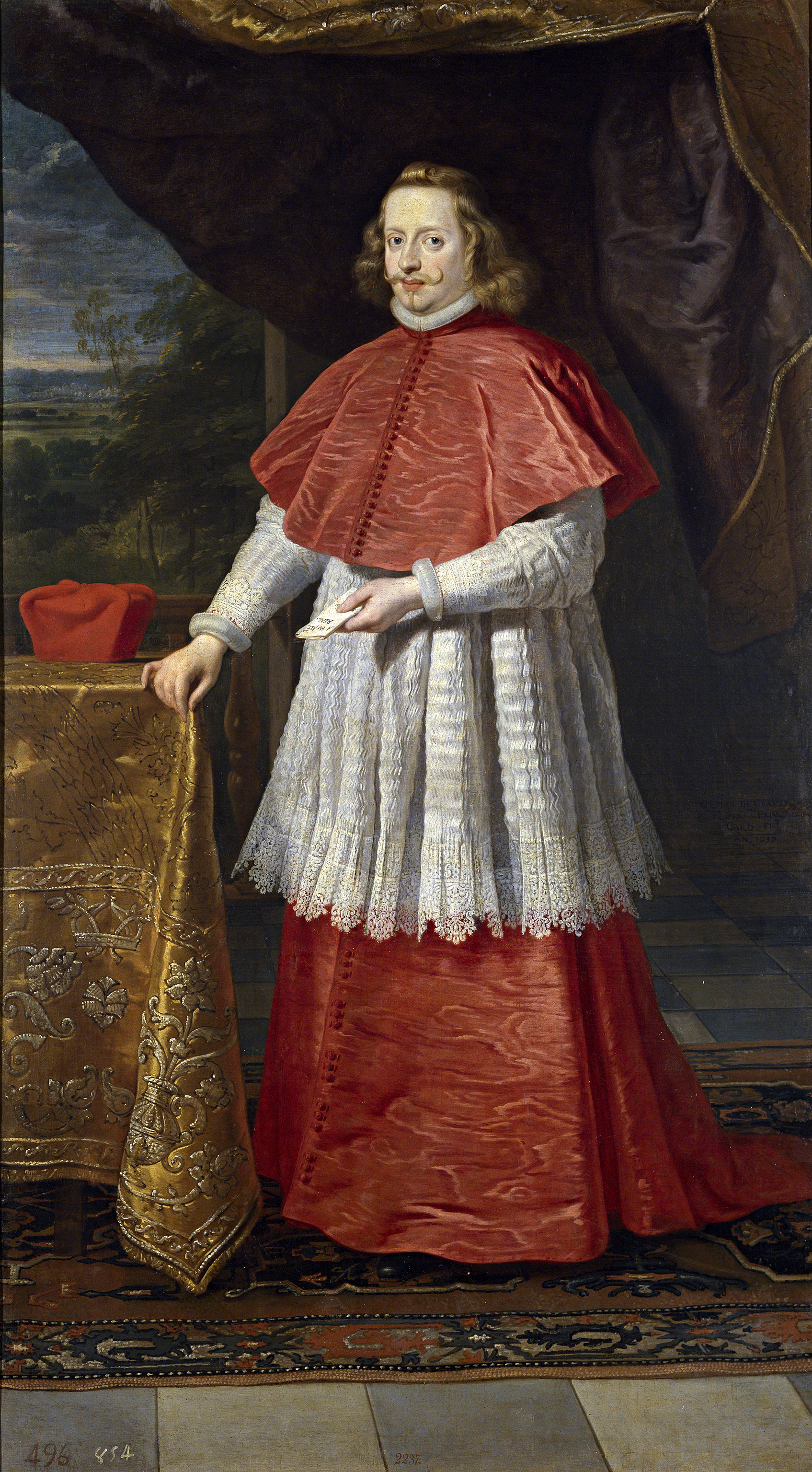Juan Luis Cipriani Thorne (1943-), actual Arzobsipo de Lima y Primado del Perú, perteneciente al Opus Dei. No hay descripción oficial del escudo, pero creo que las coronas abiertas y la estrella del escudo representan a Lima, su actual sede episcopal. La estrella puede simbolizar también a la Virgen María, dado que la estrella es una de sus diversas representaciones en heráldica. Creo que la torre simboliza a Ayacucho, donde fue arzobispo (1995-1998), pues ese elemento aparece en el escudo de armas de dicha ciudad.
El lema, Consummati In Unum (en Latín, Consumados en la unidad), proviene de los textos de San Josemaría Escrivá de Balaguer, fundador del Opus Dei.
-
Juan Luis Cipriani Thorne (1943-), current Archbishop of Lima y Primate of Peru, who belongs to Opus Dei. There isn't an official description of the coat of arms, but I think the open crowns and the star represents Lima, his current episcopal see. The star may also symbolize Virgin Mary, because star is one of her various representations in heraldry. I think the tower represents Ayacucho, when he was archbishop (1995-1998), cause this element appears on the coat of arms of this city.
The motto, Consummati In Unum (Made perfectly one, in Latin), comes from Opus Dei founder Saint Josemaría Escrivá de Balaguer's texts.
 |
Foto del Cardenal-Arzobsipo de Lima hablando en su programa de radio Diálogo de Fe, transmitido por RPP.
Photo of the Cardinal-Archbishop of Lima talking on his radio program Diálogo de Fe, broadcasted by RPP. |

















